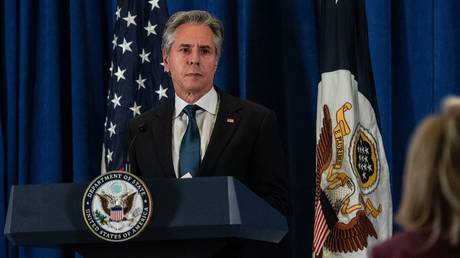ARTICLE AD BOX
Ramadan is an ideal opportunity for diabetics to improve their health. Most people can fast safely by taking some precautions in coordination with their doctors. Ramadan helps adopt a healthy lifestyle by organizing meals, focusing on proper nutrition, exercising, and reducing smoking.
Fasting requires advance planning, focusing on four strategies: proper nutrition, monitoring blood sugar, physical activity, and getting enough sleep.
Dr. Hassan Hosni, an endocrinologist at the Cleveland Clinic in the United States, confirms that many diabetic patients can fast during Ramadan safely and enjoy all the spiritual, physical and psychological benefits of this holy month, provided that they obtain the approval of their doctors and take some necessary precautionary measures.
Dr. Hosni explained, “Lifestyle factors such as poor diet, excess weight, smoking, and lack of exercise can have negative effects on blood sugar and insulin levels , making diabetes management more difficult. Ramadan provides an opportunity to "Ideal for focusing on adopting a healthy lifestyle that reduces or eliminates diabetes risk factors, while simultaneously reducing cholesterol levels and improving cardiovascular health."
He pointed out the need for a diabetic patient to visit the doctor concerned with his health condition well before the month of Ramadan to ensure his health readiness to fast the holy month. He said, "During this consultation, the medical team can provide advice about adjustments to medications that must be made while fasting, how to choose healthy foods, how to monitor blood sugar levels, and what circumstances may require them to break their fast."
Dr. Hosni explained that fasting does not only lead to adjusting meal times, but it may affect sleep hours, circadian rhythm, eating habits, physical activity, etc., pointing out the importance of planning in advance by applying four strategies to ensure optimal health during the month. Ramadan.
1- Monitor blood sugar levels
Dr. Hosni stated that diabetics during Ramadan may be at risk of a significant increase or decrease in blood sugar , in addition to the risk of dehydration. Other serious complications that they may face include diabetic ketoacidosis , which may be life-threatening, which occurs when there is not enough insulin in the body to use sugar and convert it into energy, so the body breaks down fats and releases ketones, which may accumulate in the blood. Blood and causes the blood to turn into an acidic liquid.
He pointed out that in order to reduce these risks, patients must monitor their blood sugar levels periodically, and said, “If you want to reduce the number of times you prick your fingers to measure your sugar, you can use continuous blood sugar measuring devices. These are small, temporary, and wearable devices.” It contains a subcutaneous sensor that can measure sugar levels 24 hours a day, which the patient usually replaces once every 10-14 days or as needed.
2- Pay attention to warning signs
Dr. Hosni stressed the importance of patients knowing the warning signs of high or low blood sugar, and when they should break their fast in cases of medical emergencies. Signs of low blood sugar include: tremors, sweating, nausea, fatigue, headache, irregular or rapid heartbeat, and more. Symptoms of high blood sugar include: blurred vision, frequent urination, headache, increased thirst and/or hunger.
He stressed that if any of these symptoms appear, patients must measure their blood sugar levels immediately. Patients should also break the fast if blood sugar levels are less than 3.9 mmol/L (70 mg/dL) or more than 16.7 mmol/L (300 mg/dL), but there are some other patients who must break fast at blood sugar levels. Other blood sugar changes depending on their age and overall health, so this matter should be discussed with their diabetes management team.
Some people can gain weight during Ramadan due to several factors, including lack of movement, eating a lot of carbohydrate-rich foods at breakfast, or eating a lot of snacks during non-fasting hours.
Dr. Hosni explained that during breakfast, individuals often eat quickly, which may lead to overeating, as the satiety signal may take from 15 to 30 minutes to reach the brain.
It is preferable for individuals to cooperate with a nutritionist who is an expert in diabetes to determine their daily calorie needs with the aim of losing or maintaining weight, depending on the case. On this basis, a sustainable meal plan or strategy can be developed to ensure that the individual obtains balanced and healthy amounts of macronutrients in the suhoor and iftar meals, which include proteins, fats, and carbohydrates. In general, we recommend that patients eat 40-50% of their daily calories at breakfast, between 30-40% at suhoor, and the rest as a snack at night, according to Hosni.
Drinking a sufficient amount of water during the period between Iftar and Suhoor, and reducing the consumption of sugary drinks or those containing caffeine, is very necessary. These steps become more important in hot areas or with long daylight hours, where the risk of dehydration and the formation of diabetic ketoacidosis increases.
4- Exercise in moderation
He noted that regulating blood sugar and weight and supporting cardiovascular health are among the major benefits of exercise, but individuals should discuss their exercise plans with their health care team. He said, "Exercise should be done with caution during Ramadan, especially if patients take insulin, which may expose them to the risk of low blood sugar when exercising. We often recommend walking as a safe and healthy way to exercise, and it is preferable to do it after breakfast." .
Dr. Hosni concluded, “The month of Ramadan is the ideal time to adopt healthy habits that individuals can build upon after the month has passed so that they can enjoy its benefits in the long term.”
.png)
 8 months ago
4
8 months ago
4









 English (US)
English (US)